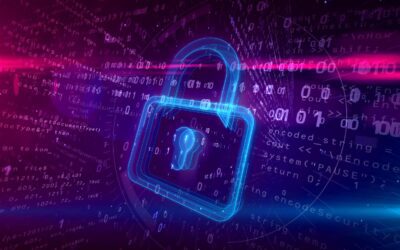Identity and Access Management (IAM) is crucial to any cybersecurity strategy. It safeguards sensitive data by ensuring only authorised individuals can access specific resources. As cyber threats evolve, so must the processes and tools used to combat them. Having a handle on who is accessing your systems and ensuring they access what they need is critical in protecting your business.
This blog post will discuss the role of Identity and Access Management in modern cybersecurity, shedding light on its importance and how it can help you protect your digital assets.
What is Identity and Access Management?
IAM is a framework that involves the management of digital identities and their access to various resources. It’s a system that ensures the right individuals can access the right resources at the right times; for the right reasons. This involves multiple tasks, including creating, managing, and deleting user identities and controlling their access to resources.
The Importance of IAM in Cybersecurity
IAM plays a crucial role in any cybersecurity strategy for several reasons:
Enhancing Data Security
Controlling who has access to what helps protect sensitive data from falling into the wrong hands. It ensures that only authorised individuals can access specific resources, reducing the risk of data breaches.
Regulatory Compliance
Many industries have regulations that require businesses to protect sensitive data and prove they’re doing so. IAM can help organisations meet these requirements by providing a clear record of who has access to what, when, and why.
Improving User Experience
Identity and Access Management solutions can also improve the user experience by enabling single sign-on (SSO). This allows users to access multiple applications or services with a single set of credentials, simplifying the login process and reducing the need for multiple passwords.
The Future of Identity and Access Management
As cyber threats continue to evolve, so will IAM. Future trends include the increased use of artificial intelligence and machine learning to detect abnormal behaviour and potential threats and the expanded use of biometrics for more secure authentication.
Will We Say Goodbye to Passwords for Good?
One question that often arises is whether we will eventually say goodbye to passwords for good. Passwords have long been a staple of digital security, but they also have drawbacks. They can be easily forgotten, stolen, or even guessed; managing them can be a hassle.
The rise of more advanced authentication methods has led many to speculate that the days of traditional passwords may be numbered.
Biometric Authentication
Biometric authentication, which uses unique physical or behavioural characteristics to verify identity, is becoming increasingly common. This includes everything from fingerprint and facial recognition to voice patterns and even the unique way a person types.
Multi-factor Authentication
Multi-factor authentication (MFA), which requires users to provide two or more verification factors, is another method gaining traction. MFA significantly increases security by ensuring that an attacker still doesn’t have enough information to breach the account even if one factor is compromised.
Links and One-time Codes
There’s also a growing interest in passwordless authentication methods, such as magic links or one-time codes sent via email or SMS. These methods eliminate the need for users to remember complex passwords and, when implemented correctly, can offer higher security.
Many of these advanced methods still require a password as one of the authentication factors. As well as that, not all organisations or users are ready or able to adopt these new technologies. While the role of passwords may diminish as other authentication methods become more prevalent, it’s unlikely we’ll be saying goodbye to them for good anytime soon.
Instead, we can expect a future where passwords coexist and are increasingly supplemented by other authentication methods. This multi-layered approach to IAM will provide a more robust defence against cyber threats, ensuring that our digital identities are more secure than ever.
Next Steps
Identity and Access Management is a vital component of modern cybersecurity. IAM is crucial in protecting sensitive data, meeting regulatory requirements, and enhancing the user experience by ensuring the right individuals have access to the right resources. As cyber threats evolve, IAM’s importance will only continue to grow.
Privileged Access Management is a crucial component of our security packages. We can help you build an effective cybersecurity strategy no matter where you are in your journey. If you want to learn more, fill out a form here, call us on 03332401824 or email hello@soconnect.co.uk.






